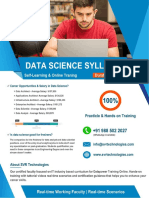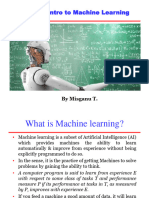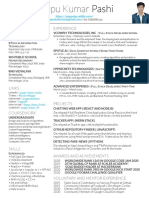0% found this document useful (0 votes)
14 views14 pagesAML Unit-1
The document discusses data representation techniques essential for training machine learning models, including methods for numerical, categorical, text, time series, image, and composite data. It emphasizes the importance of domain knowledge throughout the machine learning process, from objective definition to deployment, and highlights the differences between structured and unstructured data. Additionally, it covers the significance of linear algebra in machine learning, supervised learning concepts, and the implications of bias and variance in model performance.
Uploaded by
mahekgure05Copyright
© © All Rights Reserved
We take content rights seriously. If you suspect this is your content, claim it here.
Available Formats
Download as DOCX, PDF, TXT or read online on Scribd
0% found this document useful (0 votes)
14 views14 pagesAML Unit-1
The document discusses data representation techniques essential for training machine learning models, including methods for numerical, categorical, text, time series, image, and composite data. It emphasizes the importance of domain knowledge throughout the machine learning process, from objective definition to deployment, and highlights the differences between structured and unstructured data. Additionally, it covers the significance of linear algebra in machine learning, supervised learning concepts, and the implications of bias and variance in model performance.
Uploaded by
mahekgure05Copyright
© © All Rights Reserved
We take content rights seriously. If you suspect this is your content, claim it here.
Available Formats
Download as DOCX, PDF, TXT or read online on Scribd
/ 14
























































































